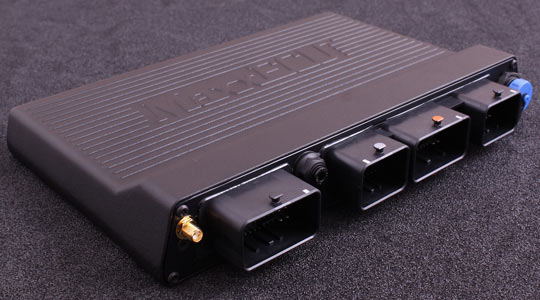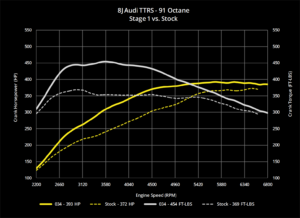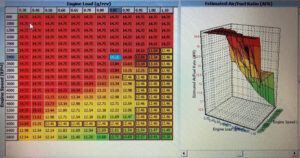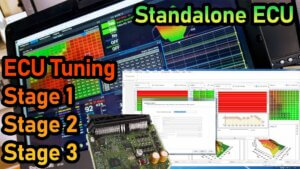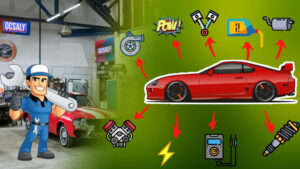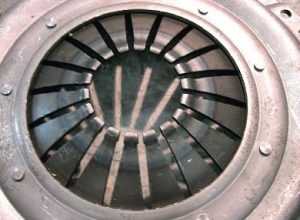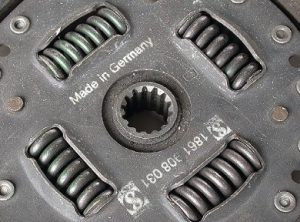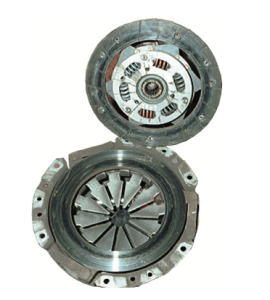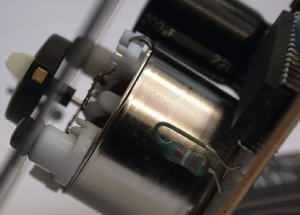A standalone controller has the ability to perform all Of its own engine monitoring and control functions from a single box. It does not require any outside assistance from body Or chassis modules. As such, they are particularly well suited to race cars, hot rods, and classics where these outside modules seldom exist. Each standalone controller is designed to work with its own wiring harness with connections to the necessary sensors and outputs. Very little outside engineering is required to get most systems up and running on just about any engine. The same standalone controller can often be used on a wide variety of engines from inline fours to V8’s or even rotary Wankels. This common architecture keeps production costs reasonable and allows the user to remove the hardware from one vehicle and install it in another by simply changing the programmable configuration and a few sensors ! In most cases. The general control logic remains the same. Lessons learned tuning a standalone controller on one application can often be applied toward another in the future. If the vehicle was originally equipped with a carburetor, there is often no option for a replacement factory controller. A standalone controller allows the user to add the flexibility Of electronic by using the system’s own sensors and harness. The only wiring connections necessary to the rest Of the vehicle are a 12volt supply and ground. This makes installation as simple as following the instructions included with most controllers and adding the proper high pressure fuel supply system. Similarly, race cars that have a few extra pounds of unnecessary equipment are easily equipped with standalone controllers. With the elimination Of any unnecessary modules, their wiring harnesses and connections do not disturbt the operation of the standalone EFI control system. Since most standalone controllers are capable Of working on inlet pressures of up to 3 bar MAP(more than 30 psi in the intake manifold!), they have no problem working With highpowered engines. Most standalone controllers will also allow for engine speeds well beyond factory limits in production controllers,another key benefit to the racer ECUs.
Why Use a Standalone?
The primary reason for choosing a standalone EFI system is to add fuel injection to a vehicle where non-previously existed. Updating carbureted engines to electronic controlcan improve efficiency, flexibility to weather changes, and overall drivability. The improvement in cold-start quality alone is enough formany to justify the change to electronic fuel injection. Adding fueleconomy and better driving mannersis often the icing on the cake here.Another common reason for running a standalone controller is to upgrade from a factory ECU, that has limited flexibility. If one does not have proper access to all Of the calibration maps in a factory ECU, it can be utterly impossible to get some hardware combinations tuned properly. It can be an extremely frustrating experience attempting to tune around the factory set points only to have your final work “leaned out” by automatic correction strategies.There are many layers of control within modern OEM engine controllers. Without access to all of them, it can be a fruitless effort to attempt tuning. With some vehicles,there are no aftermarket tuning solutions whatsoever for the stock ECU.A popular choice here is to install a “piggyback” controller that intercepts and modifies the signals going to and from the factory ECU. This is at best a compromise, and often leads to the same concerns as tuning with only limited ECU access.Bypassing these systems entirely with a standalone engine controller can Open the doors to a properly running vehicle, even at significantly elevated power levels.The key in this case is to ensure that the removal Of the factory ECU does not wreak havoc upon other modules within the vehicle. There are often safety checks performed only by the ECU, but by body controllers that may trigger “limp home” conditions if left unaddressed. When installing a standalone controller in a production vehicle, it is important to do your homework regarding what modules interact with the ECU. In some cases,it is possible to just leave the factory ECU on the harness to make the proper connections, but still have the standalone controller entirely in control of engine functionality.
So what’s next ?
Standalone EFI systems have several key benefits over some other alternatives. First and foremost,they’re relatively simple in design and operation. While still complex when compared to a carburetor, the intricacy of modem OEM electronic controls makes the average standalone look like child’s play in comparison. Standalone EFI controllers usually only have a few layers of control at most. This makes adjustments much simpler for the end user. The simplicity extends to the installation and integration of the controller into the vehicle. Because the standalone ECU does not need any outside communication to run the engine correctly, the setup process is streamlined. Since most standalone controllers operate on the speed density glance, appears to be an original round air cleaner atop a carburetor. Speed density systems also have the benefit of being pressure based controls. This means that even if the local barometric pressure changes,the EFI controller has the ability to automatically adjust. Even better, if used in a turbo or supercharged application, the speed density control system can tolerate pretty much any airflow amount imaginable as long as the system’s MAP sensor is within the measurable pressure range. Fortunately for the speed freaks of the world, 2 bar and 3 bar MAP sensors are both readily available and affordable. In short, the sky’s the limit for horsepower as long as you can measure the pressure.
Drawbacks of SA Controllers
So what am I missing? Why don’t all ECUs operate this way? While the simplicity of a standalone controller’s layout is beneficial to dedicated race cars, owners of road going vehicles may not be as quick to embrace them. Many modern cars integrate the ECU’s outputs and calculations into other systems. For example, fuel consumption numbers from the ECU can be employed. There is no need for a MAF sensor, so even multiple intake paths can be used on a single engine. Likewise, the absence of the MAF sensor means that it can never be the limitation in either range overflow capacity for the engine. Many classic car owners prefer to discretely hide the EFI system under what, at a principle, they are exceptionally forgiving of intake system design. Almost any combination of air filter,tubing, throttle body, and manifold are often passed to a body computer that will display instantaneous MPG/100km/liter ,average fuel economy, and projected range numbers to the driver. If the factory ECU is eliminated, the signal that makes this convenience possible is lost. Not all drivers are willing to make such compromises in the name of increased power or simplified wiring. The same argument can beheld for ambient air temperature measurements, trouble codes, and predicted Oil change interval calculations. If these amenities are to be retained, then the factory ECU must remain installed and functional. This can seriously limit potential modifications unless a factory ECU remapping tool is available. Even worse than losing an optional convenience feature, some vehicles have a Controller Area Network (CAN) or similar inter module connection bus that is required for proper operation. Simply removing aSingle component on the network Or communication bus can send the other remaining modules into a rather disagreeable state to say the least. It is possible that functions such as braking systems and stability control may use overlapping signals for wheel speed, throttle angle, engine torque, driver inputs, and ambient temperature that are either shared with the ECU or passed through it. Breaking this connection can have seriously undesirable results up to and including a stranded vehicle.

